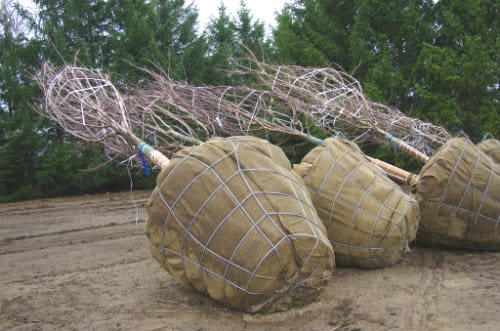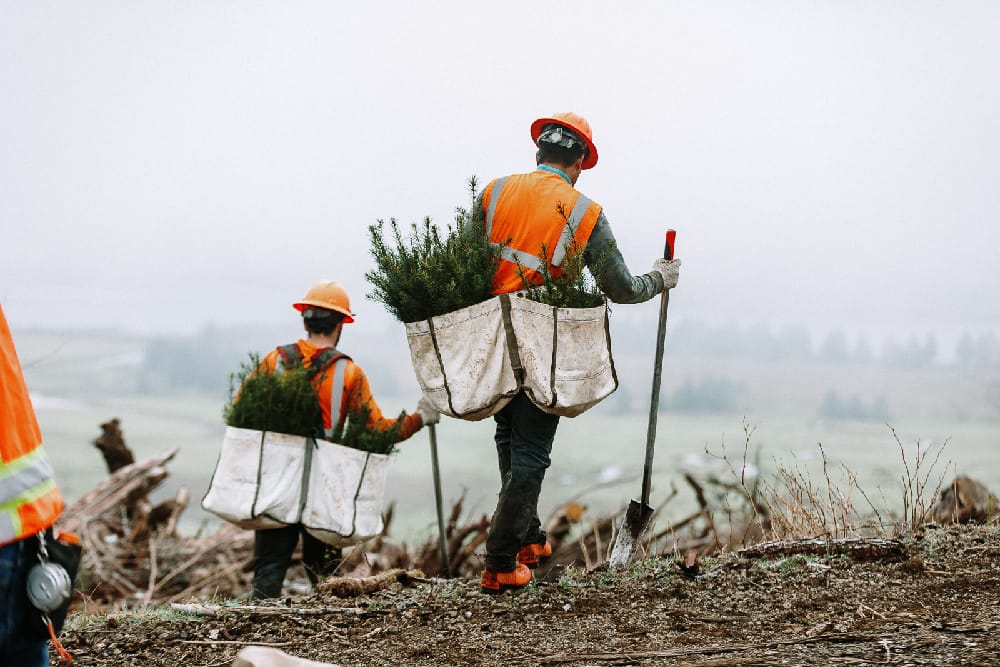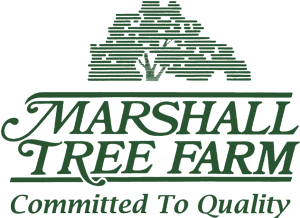Grown to self-destruct

E. Thomas Smiley, Ph.D. and Donald C. Booth Ph.D.
Are nursery trees grown to self-destruct in the landscape? At the research and technical support center for one of the largest tree and shrub care companies we see many plant problems. Some plants die due to insect infestation or disease, but a growing number are due to problems that can be traced back to the nursery. These problems include root collar disorders, girdling, sub-standard root balls and weak branches. Lets look at the major problems that we see on the maintenance end so that you can relate them back to production.
The root collar is the transitional area between the trunk and buttress roots. On naturally generated trees, this area is above the soil line. It is exposed to air and experiences the cleaning effects of wind and rain. Many nursery plants have the root flare buried under soil, burlap and twine. Ideally the collar should be visible. At the University of Rhode Island’s Sustainable Landscape Arboretum, 25 of 33 trees, representing 24 species from at least seven different nurseries, had three to 12 inches of soil above the root collar (Maynard, 1995)
The Bartlett Tree Research Laboratories conducted a trial designed to evaluate the extent of root collar problems in the landscape. In 1991, we asked Bartlett Monitor IPM program technicians in three major eastern markets to locate groups of 2 to 3″ caliper professionally planted trees. If the root collar was obscured by soil or mulch, the technician marked the level on the stem and excavated until buttress roots were encountered. Of the 417 trees examined, 93% had mulch covering the buttress roots. Mulch was typically applied by planting crews at installation, but soil depth was usually unchanged from the nursery. Most planting crews are trained to install at “nursery depth”. The average depth of mulch and soil varied greatly with location (Table 1), but there was rarely less than 2″ of soil covering the root collar.
What is the plant health effect of 2 – 6 inches of soil on the root collar? We established a trial to answer that question using 68 newly transplanted bare root whips. Half were planted with the roots at grade and the other half six inches deep. Willow oak was used due to its availability and well known durability. In the Piedmont region of the Carolinas, the transplant survival rate of this species is very high. After four years 26% of the deeply planted trees had died versus only 6% of those planted on grade. The surviving deeply planted trees had 17% less caliper growth.
In a smaller demonstration plot using white pine, a species known to be sensitive to root collar problems, 2″ caliper trees that were planted six inches deep died within six months while the control trees thrived.

One of the factors involved in species sensitivity to deep planting is susceptibility to root disease pathogens such as Phytophthora, Leptographium, and Armallaria. White pine is one of those species that when planted deeply can readily become diseased.
Other symptoms on deeply planted pines are winter injury and decline. In an experiment on Long Island with Japanese black pine, established, declining trees that were planted deeply three to seven years earlier, were either excavated or left with six inches of soil against the root collar. Winter injury was observed on a majority of the deeply planted trees but none of the excavated trees. Decline symptoms were reversed on the excavated trees. Many excavated trees exhibited a deeper green needle color and increased shoot growth relative to the control trees that continued to decline. Trees that die rapidly are often those that are deep in the nursery then dug with a tree spade. If a tree is grown six inches deep and is dug with a 32″ tree spade, an additional one third of the root system is left in the nursery due to the angle of the blades.
When the tree is planted in the landscape not only is there the potential for root collar problems but the root system is undersized. Substandard root systems mean lower starch reserves and fewer roots to absorb water and nutrients. Root system diameter is far more important than the diameter at the top of the root ball. Trees that initially tolerate deep planting are by no means assured of long-term survival. Girdling is another of the problems that is associated with deep planting. We are all familiar with roots that girdle stems. While they can be found on almost any tree species, they are most common on maple. When trees are grown with their buttress roots exposed, stem-girdling roots cannot develop.
Roots do not grow out of the soil to circle the trunk! Move the root collar down a few inches in the soil and it would be hard to find a maple without development of girdling roots. Roots, of course, are not the only girdlers found on plants. “Girdling soil” is a newly recognized factor associated with deep planting. When roots enlarge in diameter they can push the soil upward, when a trunk is surrounded by soil, it can only push it outward. If the tree is planted in a dense or compacted soil, the pressure exerted by cambial growth is not enough to move the soil, so radial growth is restricted. With smaller annual rings, water and nutrient transport is reduced. Hormone or growth regulator movement in the phloem may also be disrupted, possibly resulting in the previously mentioned winter injury.
In our study of newly transplanted trees, at least 16% of the trees were found to have materials left over from production or planting that was already in contact with the trunk and had the potential to girdle the tree. These materials were mainly synthetic ropes and straps used to secure the burlap, lifting the ball or guying the tree. Synthetic burlap that was left on root balls 10 to 15 years ago is often found girdling tree trunks and roots of trees.
It would not be surprising to see a lawsuit result from the failure of a large tree that had its roots damaged by the synthetic burlap. Use of synthetic burlap appears to be less than before, but we still see it. Planting crews often leave these materials. Using biodegradable fibers would save thousands of trees a year. Wire baskets have been a controversial topic in both the nursery and tree care industries. We do occasionally see stem and root girdling when baskets are left intact after planting. Symptoms are most obvious during drought years when the tree has not grafted over the wire.
An easy remedy to avoid girdling the buttress roots is to use a basket one size smaller. For example, for a 32″ spade dug root ball, instead of inserting into a 32″ basket, insert into a 28″ basket and twine over the top. The top of the ball will be about 6″ above the top of the basket. The landscaper will receive a ball that can be planted as is and the nurseryman saves on the smaller basket. Nametags or labels appear to be less damaging now than in the past. Metal tags attached with wire once caused problems, newer plastic tags typically become brittle and fall off before they do serious damage. It is still better to attach labels to lower limbs rather than around the trunk in case the plastic does not breakdown.
